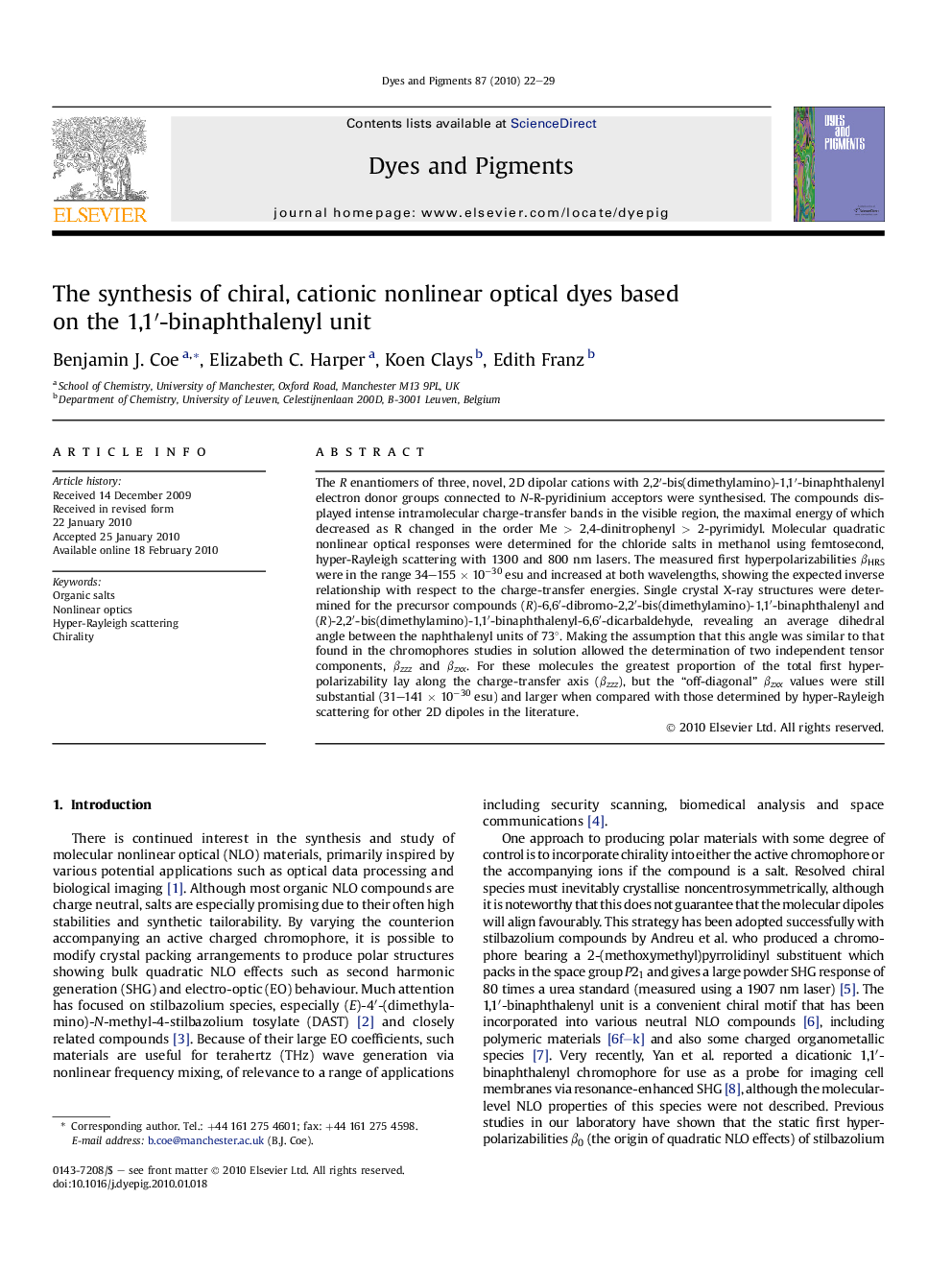| Article ID | Journal | Published Year | Pages | File Type |
|---|---|---|---|---|
| 177376 | Dyes and Pigments | 2010 | 8 Pages |
The R enantiomers of three, novel, 2D dipolar cations with 2,2′-bis(dimethylamino)-1,1′-binaphthalenyl electron donor groups connected to N-R-pyridinium acceptors were synthesised. The compounds displayed intense intramolecular charge-transfer bands in the visible region, the maximal energy of which decreased as R changed in the order Me > 2,4-dinitrophenyl > 2-pyrimidyl. Molecular quadratic nonlinear optical responses were determined for the chloride salts in methanol using femtosecond, hyper-Rayleigh scattering with 1300 and 800 nm lasers. The measured first hyperpolarizabilities βHRS were in the range 34–155 × 10−30 esu and increased at both wavelengths, showing the expected inverse relationship with respect to the charge-transfer energies. Single crystal X-ray structures were determined for the precursor compounds (R)-6,6′-dibromo-2,2′-bis(dimethylamino)-1,1′-binaphthalenyl and (R)-2,2′-bis(dimethylamino)-1,1′-binaphthalenyl-6,6′-dicarbaldehyde, revealing an average dihedral angle between the naphthalenyl units of 73°. Making the assumption that this angle was similar to that found in the chromophores studies in solution allowed the determination of two independent tensor components, βzzz and βzxx. For these molecules the greatest proportion of the total first hyperpolarizability lay along the charge-transfer axis (βzzz), but the “off-diagonal” βzxx values were still substantial (31–141 × 10−30 esu) and larger when compared with those determined by hyper-Rayleigh scattering for other 2D dipoles in the literature.
